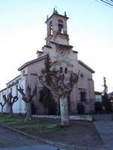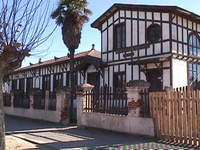Completando, ampliando, resumiendo, definiendo, repitiendo conceptos...
______________________________________________________
Henry Gray (1821–1865). Anatomy of the Human Body. 1918.
3. The Vertebral Column
(Columna Vertebralis; Spinal Column).
The vertebral column is a flexuous and flexible column, formed of a series of bones called vertebrĉ.
The vertebrĉ are thirty-three in number, and are grouped under the names cervical, thoracic, lumbar, sacral, and coccygeal, according to the regions they occupy; there are seven in the cervical region, twelve in the thoracic, five in the lumbar, five in the sacral, and four in the coccygeal.
This number is sometimes increased by an additional vertebra in one region, or it may be diminished in one region, the deficiency often being supplied by an additional vertebra in another. The number of cervical vertebrĉ is, however, very rarely increased or diminished.
The vertebrĉ in the upper three regions of the column remain distinct throughout life, and are known as true or movable vertebrĉ; those of the sacral and coccygeal regions, on the other hand, are termed false or fixed vertebrĉ, because they are united with one another in the adult to form two bones—five forming the upper bone or sacrum, and four the terminal bone or coccyx.
With the exception of the first and second cervical, the true or movable vertebrĉ present certain common characteristics which are best studied by examining one from the middle of the thoracic region.
A typical vertebra consists of two essential parts—viz., an anterior segment, the body, and a posterior part, the vertebral or neural arch; these enclose a foramen, the vertebral foramen. The vertebral arch consists of a pair of pedicles and a pair of laminĉ, and supports seven processes—viz., four articular, two transverse, and one spinous.

A typical thoracic vertebra, viewed from above.
(Vertebrĉ Cervicales).
Cervical vertebrĉ (Fig. 84) are the smallest of the true vertebrĉ, and can be readily distinguished from those of the thoracic or lumbar regions by the presence of a foramen in each transverse process. The first, second, and seventh present exceptional features and must be separately described; the following characteristics are common to the remaining four.

Sagittal section of a lumbar vertebra.
FIG. 84

A cervical vertebra.

Side view of a typical cervical vertebra.

First cervical vertebra, or atlas.

Second cervical vertebra, or epistropheus, from above.

Second cervical vertebra, epistropheus, or axis, from the side.

Seventh cervical vertebra.
The most distinctive characteristic of this vertebra is the existence of a long and prominent spinous process, hence the name vertebra prominens.
________________________________________________________



















































































































































